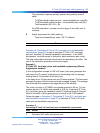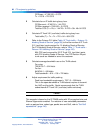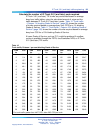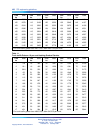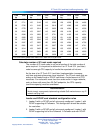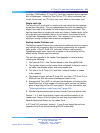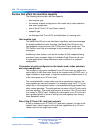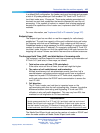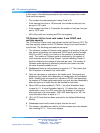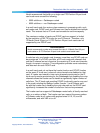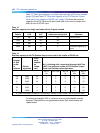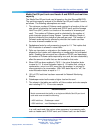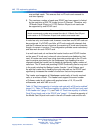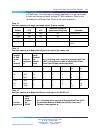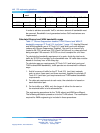
Factors that effect the real-time capacity 105
In a default QoS configuration, the Leader card must terminate and generate
a total of 50 probe packets per QoS-enabled ITG Trunk 2.x/IP Trunk 3.01
(and later) node every 15 seconds. These extra packets generated and
received use real-time capabilities that would otherwise be used for call
processing. If the number of nodes in a network that is being monitored
exceeds the capabilities of the Leader card, implement other VoIP QoS
methods.
For more information, see "Implement QoS in IP networks" (page 127).
Endpoint type
The endpoint type has no effect on real-time capacity for calls already
established. The real-time capacity of the card is affected during call setup
for Outgoing calls that use a Gatekeeper. Each outgoing call that uses a
Gatekeeper sends an extra message, the ARQ message, to resolve a dialed
number to a destination IP address. On a properly configured IP Trunk 3.01
(and later) node, this does not limit the capabilities of the node, because the
outgoing call uses a Follower card which has more then sufficient resources.
The Average Hold Time (AHT) and distribution of incoming calls
The customer’s call flow impacts the real-time engineering considerations of
IP Trunk 3.01 (and later) in three ways, as follows:
1.
Total active voice call time (CCS calculation):
If the active voice call time is lower, the call rate might be higher.
2.
The nature of call establishment and termination:
Multiple simultaneous call setup/teardown events (less then half a
second between call setups across multiple ports) have a significant
impact on the peak CPU utilization of IP Trunk cards, especially in
multi-card nodes where the DCHIP card communication is across the
local IP LAN.
3.
Call direction:
The IP Trunk Leader card real-time is impacted more on the
call-terminating side than the call-originating side. However, the relative
difference between terminating and originating IP trunk card CPU
utilization is also call-profile dependent. This can vary from 20% less
overhead on call origination to 0% less overhead.
Recommendation
Nortel recommends that if an IP Trunk 3.01 (and later) node has a mixture of
Media Card 32-port trunk cards and ITG-Pentium 24-port trunk cards, ensure
that the Leader 0 card is an ITG-Pentium 24-port trunk card. Additionally, in a
mixed-card node, the DCHIP card should be an ITG-Pentium 24-port trunk card.
The Media Card 32-port tr unk card can be used as a Leader or DCHIP card
when the node contains all Media Cards 32-port trunk cards.
Nortel Communication Server 1000
IP Trunk Fundamentals
NN43001-563 01.01 Standard
Release 5.0 30 May 2007
Copyright © 2007, Nortel Networks
.



